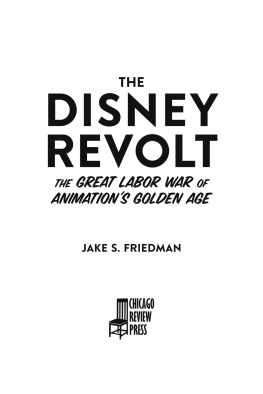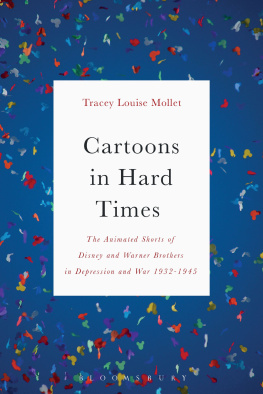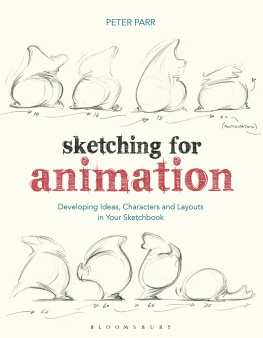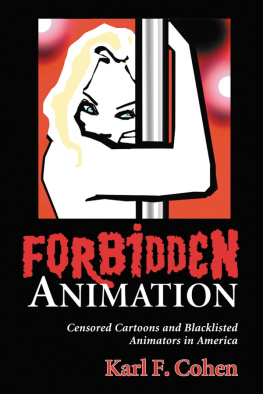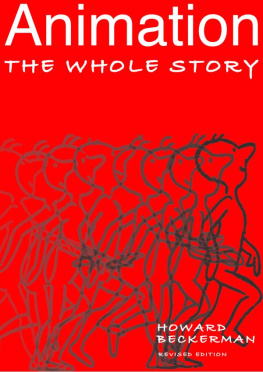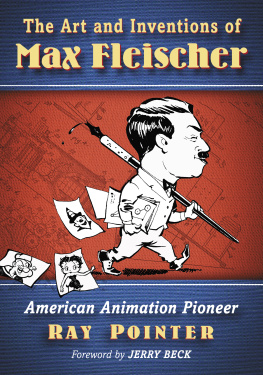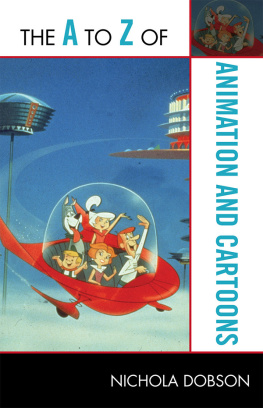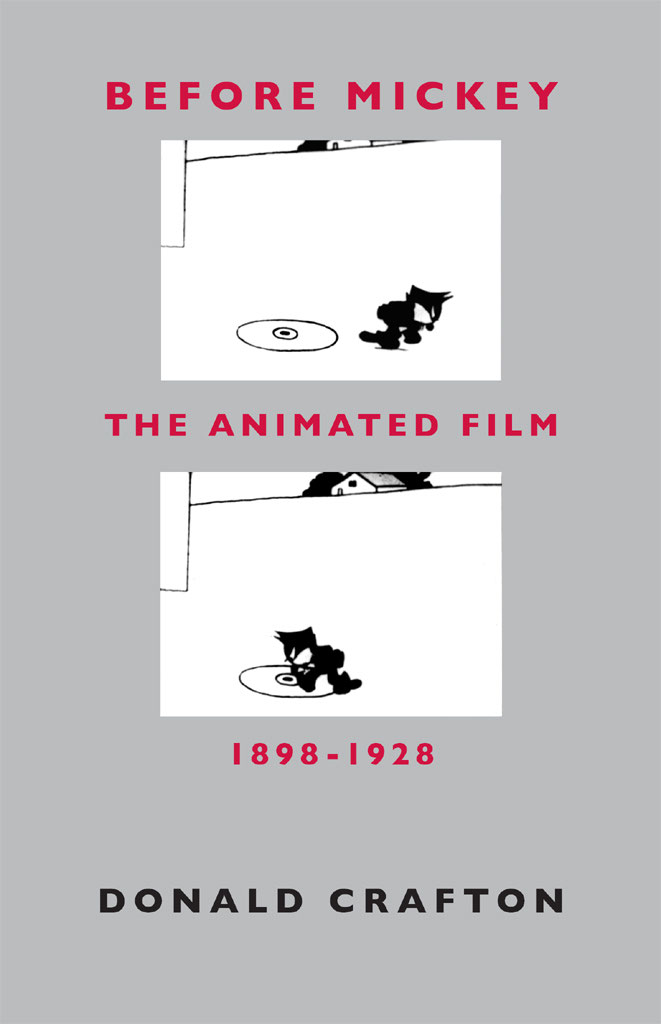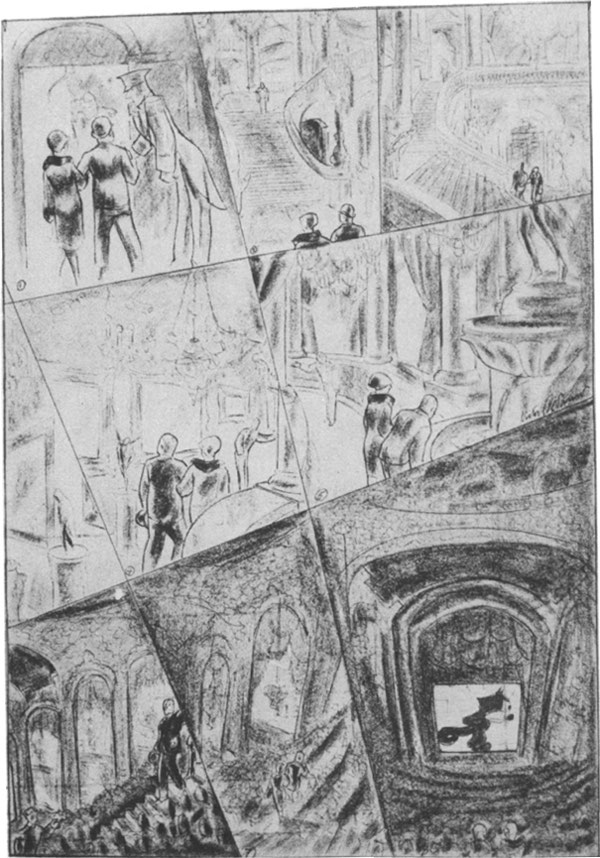The University of Chicago Press, Chicago 60637
The University of Chicago Press, Ltd., London
1982, 1993 by Donald C. Crafton
All rights reserved. Originally published 1982
University of Chicago Press Edition 1993
Printed in the United States of America
10 09 08 07 5 6 7
ISBN 0-226-11667-0 (pbk.)
ISBN 978-0-226-23102-0 (ebook)
Library of Congress Cataloging-in-Publication Data
Crafton, Donald.
Before Mickey : the animated film, 18981928/Donald Crafton ; with a new afterword.
University of Chicago Press ed.
p. cm.
Originally published: Cambridge, Mass. : MIT
Press, c1982.
Includes bibliographical references and index.
1. Animated filmsHistory. I. Title.
NC1765.C7 1993
741.5'8'09dc20
93-29048
CIP
The paper used in this publication meets the minimum requirements of the American National Standard for Information SciencesPermanence of Paper for Printed Library Materials,
ANSI Z39.48-1992.
Before Mickey
The Animated Film
18981928
Donald Crafton
With a new Afterword
The University of Chicago Press
Chicago and London
Victor DeBann The art of the motion picture, Life, December 22, 1927; 1927
For Elise
and
In Memory of Marilyn Crafton
Note to the 1993 Edition
A two-hour compilation video program, Before Mickey: An Animated Anthology, is available to accompany this book. The VHS cassette (NTSC format only) contains these titles.
The Enchanted Drawing, Blackton, 1900
Animated Painting, Porter, 1904
Humorous Phases of Funny Faces, Blackton, 1906
Lightning Sketches, Blackton, 1907
Princess Nicotine (excerpt), Blackton, 1909
Fantasmagorie, Cohl, 1908
Clair de lune espagnol, Cohl, 1909
Little Nemo (with color sequence), McCay, 1911
Gertie, McCay, 1914
Colonel Heeza Liar at Bat, Bray Studio, 1917
Bobby Bumps Before and After, Hurd, 1918
Farmer Alfalfas Revenge, Terry, 1916
Out of the Inkwell: Perpetual Motion, Fleischer, 1920
Twas But a Dream, Barr, 1916
Mutt and Jeff in the Flood, Barr and Bowers, 1918
The Gumps in Taking a Ride, Carlson, 1920
Le Garde-meuble automatique, Bosetti, 1912
Mest Kinematograficeskgo Operatora, Starevitch, 1912
Kapten Grogg Bland Andra Konstiga Kroppa, Bergdahl, 1920
The Lost World (animated dinosaurs excerpt), OBrien, 1925
Alices Mysterious Mystery, Iwerks/Disney, 1926
Alice Rattled by Rats, Iwerks/Disney, 1925
The Lunch Hound, Lantz, 1927
Felix the Cat in The Oily Bird, Messmer/Sullivan, 1928
Felix the Cat Dines and Pines, Messmer/Sullivan, 1927
Produced by Piggyback Productions. Distributed by Direct Cinema, Ltd., P.O. Box 10003, Santa Monica, California 90410-9003. (To order, phone toll-free: 800-525-0000.)
Contents
List of Illustrations
The qualities of the documents and frame enlargements are commensurate with those of the originals. Film companies, dates, sources, and copyright information are given in the legends.
Foreword
In 1916 I joined Pat Sullivan, who was animating Sammy Johnsin for Universal. He worked alone with one inker, and I did various one-shot cartoons for him. In 1919 I created a character which Paramount named Felix the Cat. I used the style of Charlie Chaplin and kept him alone in his antics, unhampered by supporting characters. Being a loner, he could roam to various locations, without being limited to any fixed place.
At the time many cartoons were using ostentatious actions and extreme clowning. They were all good, but I decided to try a new angle for variety: I used real life as a background for stories. I gave Felix a personality, using many facial expressions. He would be a pet in many homes and businessplaces, solving many seemingly impossible problems with ingenious picture gags and always leaving a happy ending. He would influence young children by exemplifying kindness and lending a helping hand to others. He would fulfill many wishes, such as forcing the weatherman to send sunshine in foul weather. All this was done by handling a serious theme in a comic fashion.
Looking back, we see a door opening slightly on a road that led to a new field of visual arts.
Otto Messmer
Preface
This is the first book to concentrate on the origins and early development of the animated film, so it ends where many accounts of the history of cartoons have begun: with Walt Disneys first spectacular successes. Even in the most comprehensive studies, those by Rondolino and Poncet, this period has been given short shrift. The authors clearly have regarded the works as being significant as forerunners, but as having little intrinsic interest. A vague technological determinism hovers over their discussion of cels and studios. Casual statements about the animated cartoons obvious relation to comic-strip art pepper the texts. Seldom is there any discussion of animations relationship to cinema as a whole; rather, it is treated as autonomous or as a mutant strain of graphic art. Misleading auteur and formalist biases have caused about 95 percent of pre-1928 animation to be cast aside as irrelevant. The passing along of anecdotes and hearsay from earlier writing has too often replaced film viewing and documentation.
When I began the research for this book in 1975 I found that the most basic groundwork of locating archival sources, ascertaining dates for films and events, learning the circumstances of production and distribution, and attributing early films had only just begun, led by Andr Martin, Bruno Edera, and Mike Barrier. Since then work has progressed rapidly, but I hope my book does not create the illusion that much does not remain to be done. I also hope that historians will go beyond the mere facts and study the enterprise of early animation. In this book I have tried to set it against the background of the industrial and cultural environment of the time. It is now clear that the formal structures of the films reflected many sources and influences, including technology, the commercial pressures of the film industry (distributors, audiences, the competition), traditions in other popular arts, individual personalities of animators, and the narrative habits (shortcut formulas for telling stories in films two to five minutes in length) dictated by the filmmakers means and expertise. I do not pretend to have unraveled this complicated dialectic fabric entirely, but it is an essential part of the study of the genre.
Some people will no doubt be surprised to learn that there was any animation at all before Mickey. In fact, there was so much that I had trouble assimilating it. No one can see more than a fraction of the thousands of films produced during this period; prints simply no longer exist. But more early animation is available commercially and in research archives than many people imagine. I have viewed as much as possible, and have also paged through dozens of trade journals published in Britain, France, and the United States. The quantity of material necessitated some decisions that might be seen as shortcomings. There are few personal anecdotes about the lives and careers of animators related here. To some extent this is justified by the fact that during the studio years it was assumed that the system, not the employees, was important. Also, forthcoming books by Mike Barrier on the history of animation and by Michael Hobbs on Max Fleischer are expected to fill the gaps. Leslie Cabargas book on the Fleischers and Bob Thomass on Disney contribute insights into their lives. Some lack of continuity may have been introduced by not adhering to a studio-by-studio approach of the type outlined by Andr Martin in his family tree wall chart. But Leonard Maltins highly readable Of Mice and Magic, which appeared as the manuscript of this book was going to the press, seems to be primarily a studio history. For me the major shortcoming is the lack of extended analysis of specific films, but refraining was judged to be a regrettable necessity. And although the book treats a film genres history, there is no detailed discussion of genre theory.


